
CLAIRE REYNOLDS

NIAMH COGLEY
WESLEY SCOTT
JUSTINA BRANDT
MAYA DOMINGUEZ
STEPHEN PASTORE
MADDIE BOONE
MARGARET CRANEY
HENRY PELMAS
NINA CARBONE

CLARE KAYE
PAIGE PANDOLFO
CHEALSY GARCIA
GRACE GAGLIARDI
MOLLY FITZPATRICK
CARLEIGH HASSING
VICTORIA BROADBENT
ELISA GEORGE
JULIANA HUXTABLE
ILLUSTRATORS




LAUREN WALCZYK GENEVIEVE VANSTON
PHOTOGRAPHERS
ELISE ANSTEY ANDY MEEKER
STEPHANIE LANE
ELIZABETH SADLER AMY MALBURG
IZZI BUDETTI JAQUELINE MORAN
MAIA MUNICH
AMELIA WHITE
MADISON RHOAD
MADELINE FORD ANDY MEEKER
ALAINA STANISCI
NATALIA CRUZ
MACKENZIE NEVIASER
SYDNEY FLOOD
MIKEY DUFFY
KELLY CIMAGLIA
CIARA SHORE
KAITLIN RIGLEY
MODELS
PRUTHA CHAVAN GRACIE DAVIS
MANUELA JULIAO
LEAH STUART MO SALZER
LIZZIE DEMACOPOULOS
JULIETTE LABRECQUE
LAURA PEREIRA
KAMRYN CHUBB
SARAH ZAMPINO
KATHRYN LABAGH
NORA DETTLING
GABRIELLE GONZALES
NIAMH COGLEY
OLIVIA GUTT
KEVIN HAMMILL
SHAMIA RAHMAN
STEPHANIE LANE
KARA FEINBERG
MADDIE THOMPSON
AOIFE HARRIS MIKEY DUFFY
HAILEY PRYOR VERONICA EULATE-GIMENEZ

CAMILLE RIVAS CLAUDIA DE LA CAMPA
CAROLINE ABELLA
ELISE TROUSDALE
ZOE ENNIS
CALEB ROCHA
AOIFE HARRIS
IANA HENDRICKSON-SLACK
GABY SIMPORIOS
LAUREN LARSEN
DANIELLA GRONO
DANIELLA DEYOUNG
LAUREN WALCZYK
MAIA GOUAZÉ
CAMILLE RIVAS
RACHEL ERICKSON
IZZI BUDETTI
JULIANE PAUTROT
ALAINA STANISCI
MOLLY FITZATRICK
HANNAH JOHNSON
GRACE LIVECCHI
CIARA SHORE
LUCIA STEPHENSON
AVAILABLE
NEAR YOU
ERIN PENDERS CLARE KAYE
MALLORY ROOF
AMELIA WHITE
CAROLINE KUHLMAN
STYLISTS F/W 2022
SOFIA CORA AVA ORTIZ
JACQUEE MORAN
LILY PARTURZO
LAYOUT BY PRUTHA CHAVAN
KAMRYN CHUBB
STEPHANIE JAMES-LEON
AMANDA BUCKLEY
NATALIA ALVAREZ
Editor in Chief Creative Director Photo Editor Photo Assistant Arts & Entertainment Editor Fashion Editor Beauty Editor Lifestyle Editor Love & Relationships Editor Secretary Fundraising Chair Treasurer Social Media Editors STEPHEN PASTORE PRUTHA CHAVAN CLAIRE REYNOLDS ELISE ANSTEY KATELYN BENZINGER GRACE MCCARTY MOLLY FITZPATRICK BELLA REILLY ANNA GAYLORD CARSON WALDRON VICTORIA BROADBENT LINDSEY TONKIN MELISSA BRUGMANN & GRACIE KUNIK AHAN DHAR SARAH SHANAHAN GRACE BIESTERFELD CLARE KAYE RIDER PESCO EDDIE FAN CLAUDIA NOLAN KATELYN BENZINGER MEGHAN MAHAFFEY JULIA LEEDOM GABRIELLE GONZALES KATHLEEN TIERNAN JULIA DAIGLE NATALIA CRUZ HAILEY PRYOR CARSON WALDRON STELLA MCFARLAND MADELINE FORD LAUREN WALCZYK KELLY CIMAGLIA MIKEY DUFFY LAUREN LOMBARDI CALEB ROCHA STEPHANIE LANE MOLLY FITZPATRICK ALEXA MANCINI JULIANE PAUTROT SARAH ZAMPINO NICKI DIPIETRO NINA CARBONE RILEY DRUMM DANIELLA DEYOUNG EMMA KEITH ZHANE COLEMAN JACKIE PALLAZOLA AUTHORS STEPHEN PASTORE CINDY LIU RACHEL ERICKSON GRACIE DAVIS LAURA PEREIRA LIZ LEMIEUX PRUTHA CHAVAN GRACE BIESTERFELD LUCIA MARINO MADDIE BOONE NORA DETTLING HAILEY PRYOR CAROLINE ABELLA SOPHIE DRESKIN IZZI BUDETTI JULIA LEEDOM JACKIE KOBESKI STEPHANIE JAMES-LEON MIKEY DUFFY EMILY KOCH MADISON LERSETH GABRIELLA NISCO ZOE ENNIS EDDIE FAN GENEVIEVE VANSTON CAROLINE MATOSSIAN GRACE GAGLIARDI AMELIA FERGUSON NATALIE CONTE MATTHEW KOWALSKI ZHANE COLEMAN LAYOUT CAROLINE ABELLA HAILEY PRYOR ELIZABETH SADLER AMELIA FERGUSON
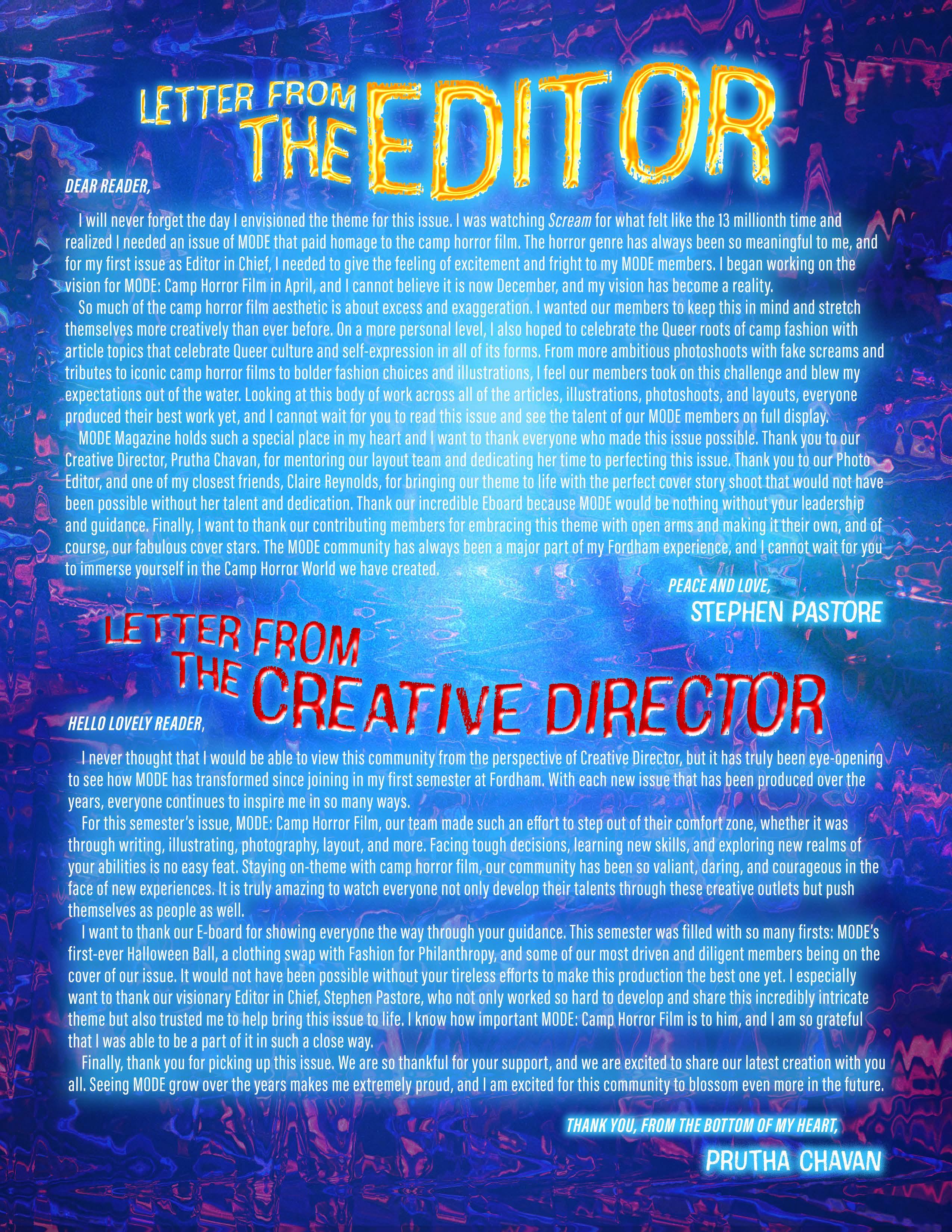



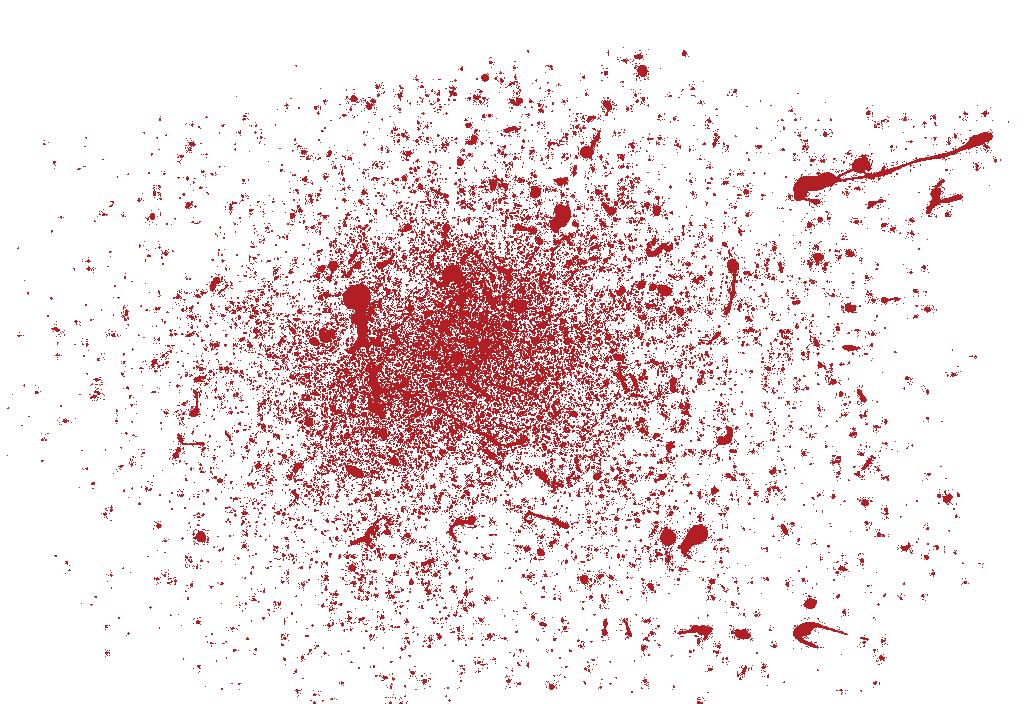
FADE IN: INT.
OF CONTENTS
5 Blog Spotlight 5 6 A Nightmare on Gay Street 6 8 OSTON 8 10 Ti West’s Pearl: How Much Is a Woman Worth? 10 11 The Hurricane of a Generation in Bodies, Bodies, Bodies 11 12 The Satire of Horror: The Scream Revival 12 14 Ding Dong the Witch Is Back 14 15 Jennifer’s Body: Femininity in Queerness and Horror 15 16 Chanel Oberlin and Our Desire to Be On Top 16 18 Day Camp: The Death of Minimalism 18 20 Daphne Blake: Style Icon 20 21 Finding Acceptance in Camp 21 22 Immortality in Fashion! 22 24 Wednesday Addams’ “Cool Girl” Aesthetic 24 26 Is 80s Jazzercise Fashion Really Gone? 26 28 Eyeliner Is the Best New Accessory 28 29 Beetlejuice and the Rejection of Modernity 29 30 The Horrific Truth About Camp 30 32 We’re Bringing Back 80s Beauty 32 34 I Am All These Things Despite 34 36 I Blame Tim Burton (But I Also Don’t) 36 38 Tunnel Vision Consumer Habits: Why We Feel the Need to Buy 38 Everything and How to Not Buy Everything 40 The Blood-Sucking Bisexuals of American Horror Story 40 41 Boo! You’ve Been Ghosted! 41 42 Freshman Dorms Behind Closed Doors 42 43 Werewolves Are Essential 43 44 A Nightmare in Neverland 44 CUT TO: 45 EXT. MODE: Camp Horror Film 45 BACK TO 50 The Pretty Little Liars Effect 50 52 Lila Drew 52 53 Ethel Cain’s America 53 54 Sadie Sink(s) Her Teeth Into Hollywood 54 55 Forever Young: Black Mirror’s San Junipero 55 56 Hauntingly Beautiful World of Tim Burton 56 57 The Rebirth of Venus: Paris Is Burning 57 58 Please Don’t Kill Me Mr. Ghostface! 58 FADE OUT. THE END. LAYOUT BY PRUTHA CHAVAN
“MODE: CAMP HORROR FILM”
TABLE
(FALL/WINTER 2022)
Wr t By A n D r
A NIGHTM E GAY ET
The second installment of the Nightmare on Elm Street franchise, Freddy’s Revenge (1985), is undoubtedly its gayest—which is what makes the movie truly scary. A myriad of commentators have interpreted the flm’s iteration of Freddy Kreuger and its homoerotic themes as a representation of the protagonist Jesse’s repressed homosexuality. This sequel centers around teenage Jesse, who is possessed by Freddy in his sleep and forced to do things against his will, namely, murder. This overarching narrative is combined with countless queercoded moments. At one moment, Freddy tries to convince Jesse to succumb to him, telling him, “I need you,” while caressing his lips with his fnger-blades. At another, Jesse tries to have sex with his girlfriend, but freaks out and leaves after he starts to turn into Freddy. The most bizarre sequence sees a delirious, sleep-deprived Jesse wandering into a gay bar in the middle of the night where he runs into his gym teacher. For some reason, the teacher makes Jesse run laps as a punishment and sends him to the showers, before he himself is dragged into the shower, stripped, and whipped to death by Jesse/Freddy. It’s undeniably camp.
Nevertheless, what makes the flm horrifying is the fact that Mark Patton, who portrayed Jesse, was closeted during the flm’s run. Patton has spoken out about how he felt betrayed by the flmmakers, who knew about his sexuality, increasingly emphasized the homerotic undertones as production progressed, and ultimately took advantage of his identity. Being in the closet is traumatic enough, but being confronted with your sexuality in a mainstream movie is far worse. While the flm’s writer David Chaskin has since tried to apologize to Patton, he also explained how he intended to tap into the “angst” caused by the rising homophobia during the AIDS crisis to give the flm an edge. However, we now know that the true horror he inficted was the emotional stress upon Patton, who left the flm industry as a result.
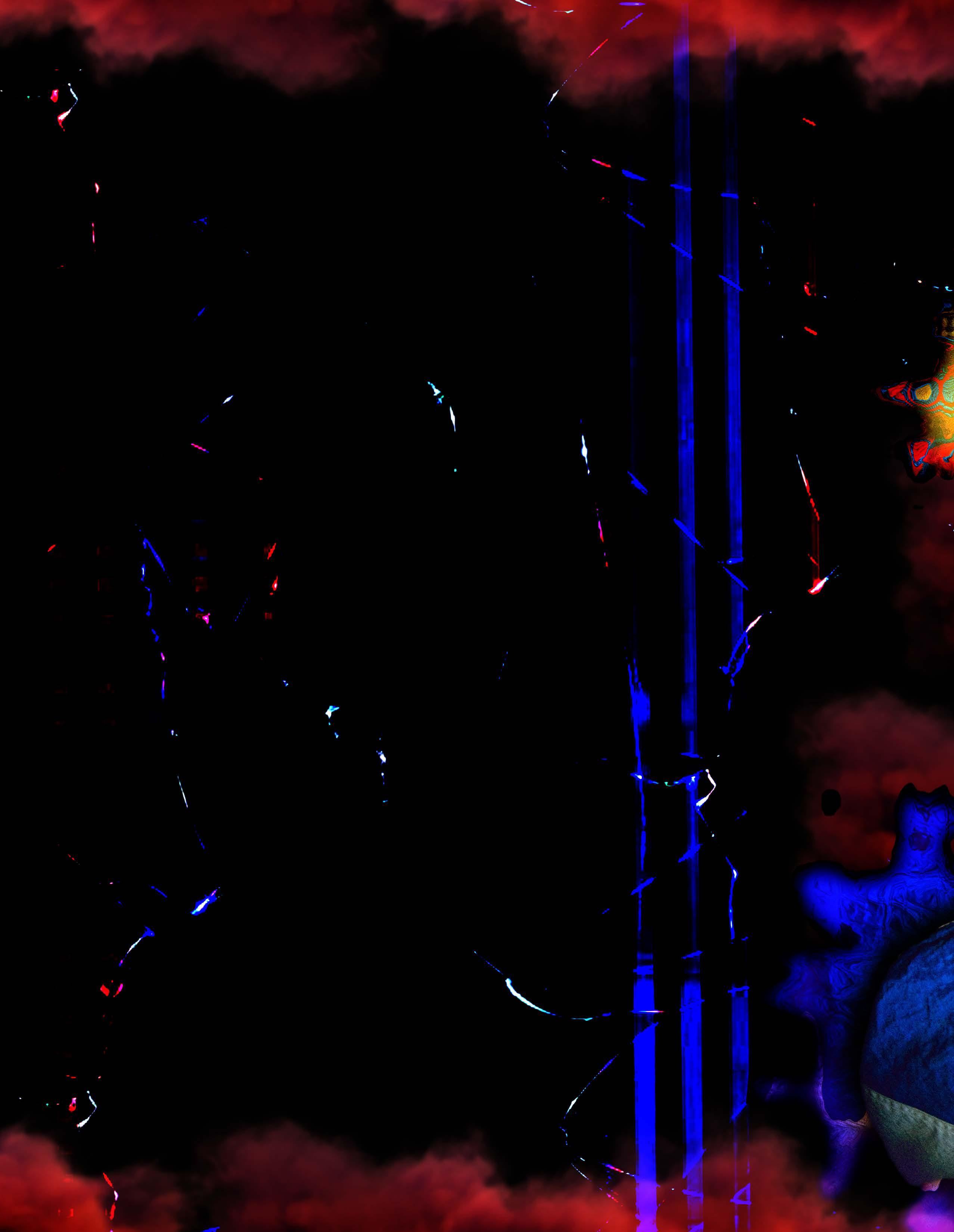
Lay t By Step n P Pho s By Clai
Mo ls: Li ie Demacop los, I i Bu i, Step n P 6
Reynolds


8

When slasher flm X was released by A24 earlier this year, the flm was praised for its subversion of common grindhouse tropes. Within X, Mia Goth plays both the role of Maxine and Pearl. Goth’s portrayal of Pearl, who is 80 years old in the flm, is the result of some pretty severe prosthetic application. This could inevitably appear gimmicky at frst, until it was announced that a prequel—also starring Goth as a much younger Pearl—had been shot in conjunction with X. Enter the country, campy world of Ti West’s aptly-named Pearl. The flm takes place in 1918 and chronicles the desperate attempts of Pearl to escape her small-town circumstances and garner celebrity status as movies begin to take shape. Both flms ofer an inventive critique of ageism and its psychological efect on women. The breakdown of a younger Pearl sparks empathy in audiences; this is a woman who sufers through her

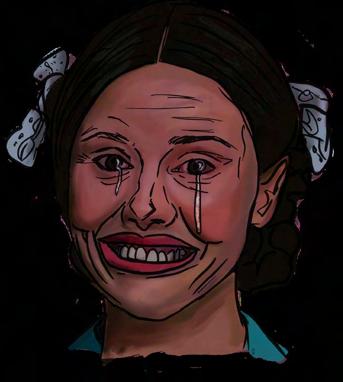
isolation and the duties attached to her role as a woman and wife. After auditioning for a role in a traveling dance troupe, Pearl is told that they are looking for somebody “younger and more blonde.” This quote echoes the message of X, during which Pearl takes her pent-up sexual frustrations out on the young cast through increasingly violent means. Fusing themes of sex and horror is not a new concept, with flms like Hellraiser showcasing the potential early on in the history of the genre. However, a tour de force array of performances from Mia Goth showcase how she is efectively driven to the edge by the lingering presence of sexuality in her life. Pearl is never detached from her sexuality, but rather never allowed to fully embrace it—a factor which motivates her horrifc breakdown in the end.



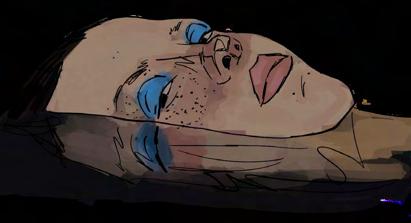
10
the hurricane of a generation in
bodiesbodiesbodies
 Written by Lauren Lombardi
Written by Lauren Lombardi
Bodies, Bodies, Bodies opens with a scene of Amandla Stenberg’s Sophie and her girlfriend Bea sharing a passionate kiss. Their afection is immediately put on hold when they get in the car as they ignore each other and blast a poppy song, scrolling through their beeping notifcations. Any pep talk one would want to have to prepare for a party with her girlfriend’s unfamiliar friends is not given. Instead Bea settles for a lack of connection and the distractions from the media around them on their drive.
The flm surrounds the mishaps that take place at a
“Hurricane Party,” mainly among fve friends who are rich, recent college graduates. Everything goes haywire when the storm causes a power outage and one ends up with a slashed throat. From there on out, anything goes. These young people are at a loss in a situation where they aren’t aided by their technology and they realize how shallow the human connections they have formed really are.
The Gen-Z satire is sold by tell-tale comedic genius Rachel Sennott. Sennott’s Alice is the least self aware person in the flm, interrupting all dialogue leading toward the point of the
flm: fguring out how this strew of murders began. At one point, Alice proclaims herself an ally in a moment where it doesn’t mean much to who she is trying to support, showing the little efect these words have when used this frivolously.
Though it is difcult to show a wardrobe in a classic one-night movie, it is still clear that these wealthy people are indulging in microtrends. From Alice’s Urban Outftters top, her leather pants that have become a hot new staple, or Emma’s foral dress, their lack of commitment to sustainability goes without saying. They are constantly attempting to keep up with the fashion of the “in” crowd, meaning their personal style is ever changing as they go along with what the other cool, rich kids are buying that day. In turn, it is non-existent.
Many facets of the GenZers from buzzwords to fashion to self-preservation tactics show that while every generation has their own attributes, none of them are perfect; there’s fault in us all.
Models: Caroline Abella, Maddie Boone, & Jaqueline Moran
Photographer: Hailey Pryor
Layout by Emily Koch
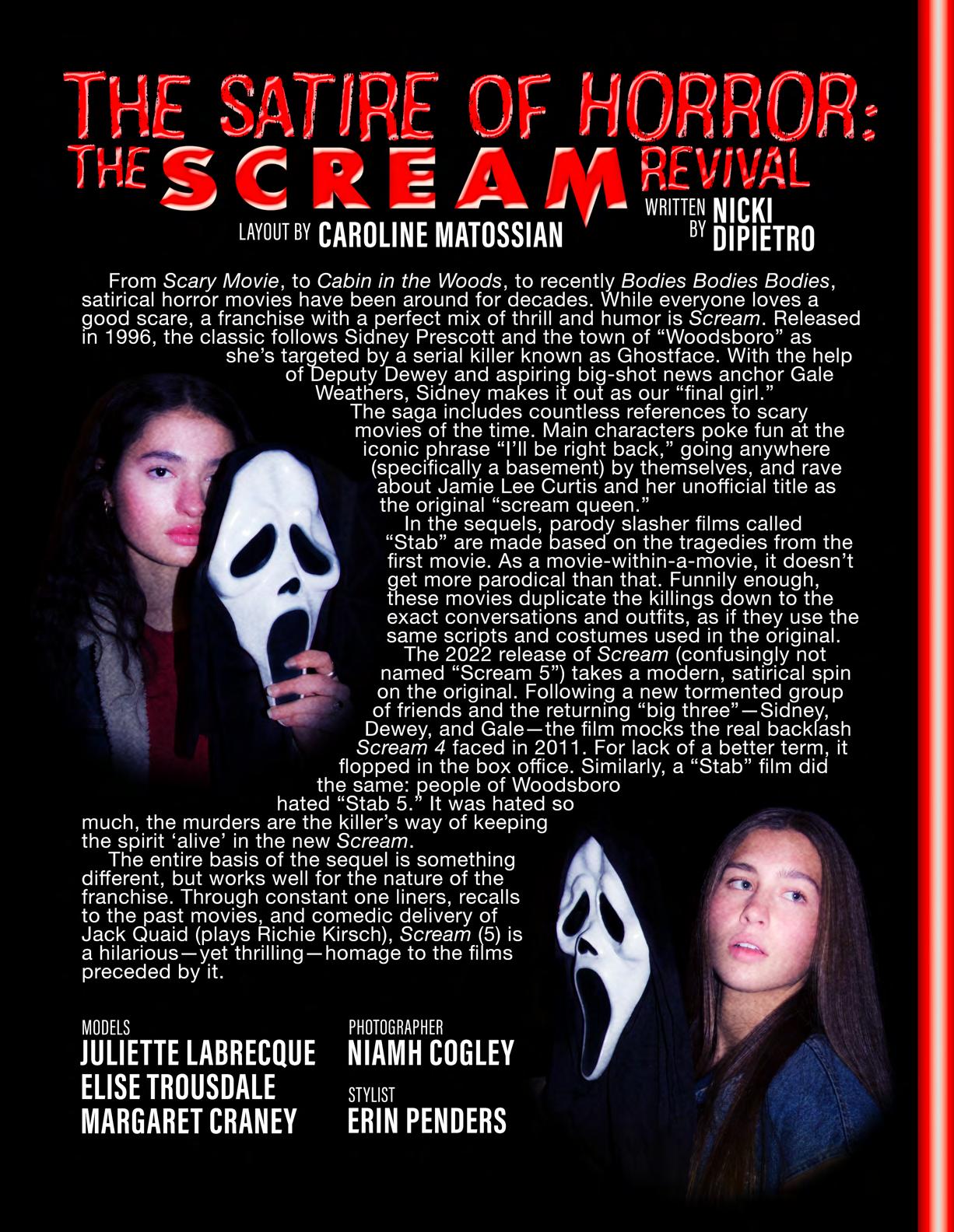
12



Enter Chanel Oberlin, president of the Kappa Kappa Tau sorority, who is exactly what you would picture when you envision a mean girl/queen bee of the early 2000s: wealth beyond comprehension, paper thin fgure (which she accredits to her diet of cotton balls and habit of bulimia), perfect natural blonde hair, a squad of minions that she aptly refers to as Chanel 2-5, (She’s Chanel #1… obvi), and a boyfriend who is the president of the top Fraternity on campus. To tie up her mean girl status with a big Chanel tweed bow, she makes it very clear from the pilot that she does not care about anyone but herself, and will not stop until she reaches her ultimate goal: winning back her equally awful boyfriend.
Despite everything awful Chanel does, viewers still fnd themselves rooting for her. In her own words “[I might be an awful person] but I’m rich and I’m pretty, so it doesn’t matter.” This is very much of the time; Regina George was awful but nobody would pass up the opportunity to be one of her friends, the same goes for Heather Chandler, and Chris Hargensen. How far will we compromise our moral compass to be popular? How many people will we push down the stairs (literally, in Chanel’s case) to be top dog? Scream Queens may seem like a camp dramedy on the surface, but it really is a critique of the compromised moral compass of our generation.
Written by Carson Waldron
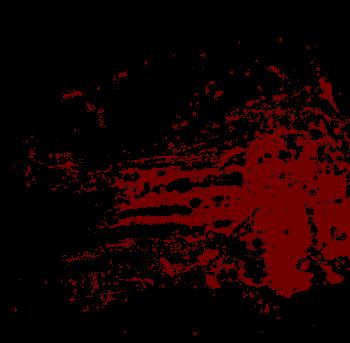
Layout by Sophie Dreskin
Photographer: Elise Anstey


Models: Kamryn Chubb, Henry Pelmas, Amelia White Stylist: Kamryn Chubb
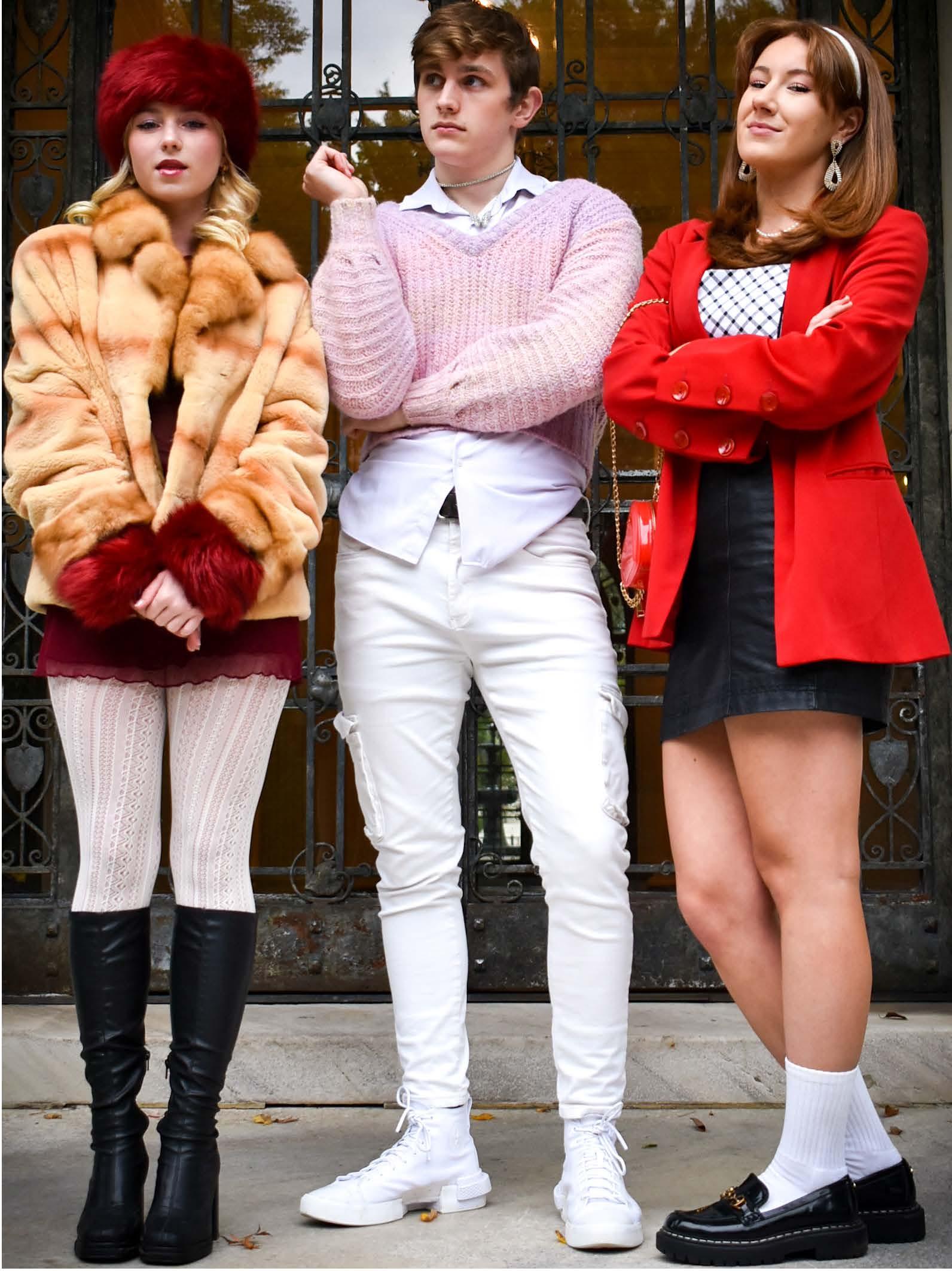
16



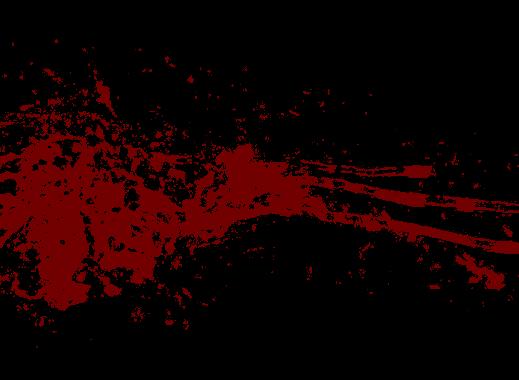
DAY CAMP: THE DEATH OF MINIMALISM
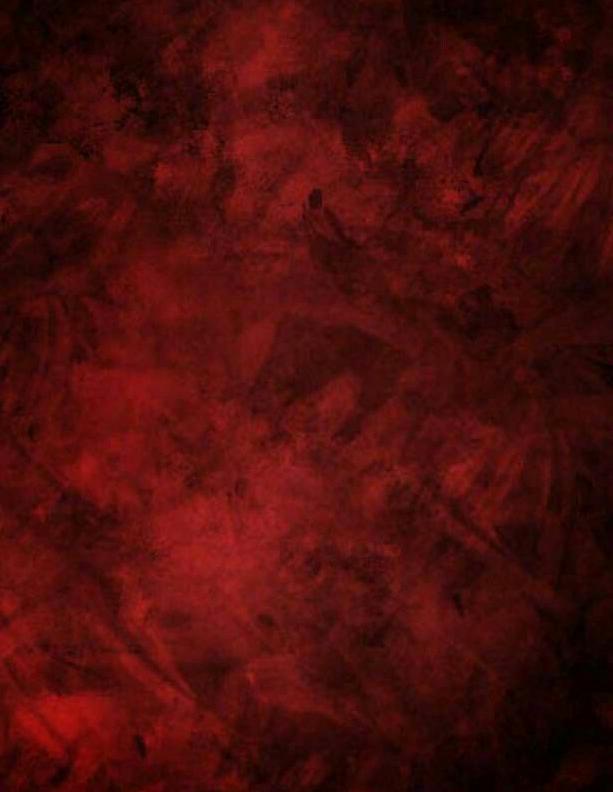
How often do you open your closet and feel like your clothes just aren’t…enough? Like, the clothes that you’ve been collecting for years are somehow inadequate. The root of this wardrobe ennui is the infuence of camp culture on day-to-day fashion: a surge in maximalism often showcased by high-end designers. Except now, the fundamentals behind such styles have trickled down to everyday people. The question is, why?

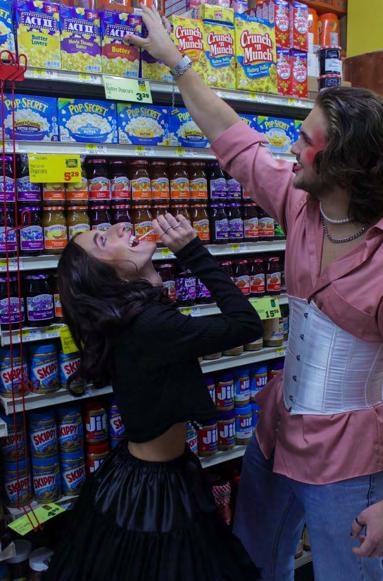
At its core, camp is extreme and fantastical, relying on wacky colors, exaggerated silhouettes, and seemingly clashing materials and designs. Now, we haven’t seen any Lady Gaga meat dresses in class, but feathers and furs have become much more mainstream. The reality is that dressing campy has become synonymous with being fashionable.
The reason for the focus on camp in daily fashion has to do with the cyclical nature of broader trends. Camp is the expression of fashion-maximalism: the antithesis of minimalism. For the better part of this century, minimalism dominated styling as a whole. An easy way to conceptualize this trend is through the lens of interior design. Think of quintessential 21st century homes: grayscale, granite, stainless steel, nothing else. Sleek lines and cookie cutter designs characterized both the clothing and broader popculture style throughout the past couple decades.
18
On the tail of that trend, maximalism reemerges, introducing more extreme styling. Current interior designs feature arches and bold—sometimes eclectic—color choices, and fashion mirrors as camp is introduced to daily fts. That being said, you can never really go wrong with a simple ft. Color blocked and well-sized outfts will always work for daily wear, but in the era of maximalism you won’t be notably stylish. Keeping up with current trends requires some adherence to the “extra” that we see in camp, but don’t be spooked when ordinary comes back from the dead!
Written by Caleb Rocha & Nina Carbone
Layout by Izzi Budetti

Photographer: Gracie Davis
Models: Caleb Rocha & Nina Carbone
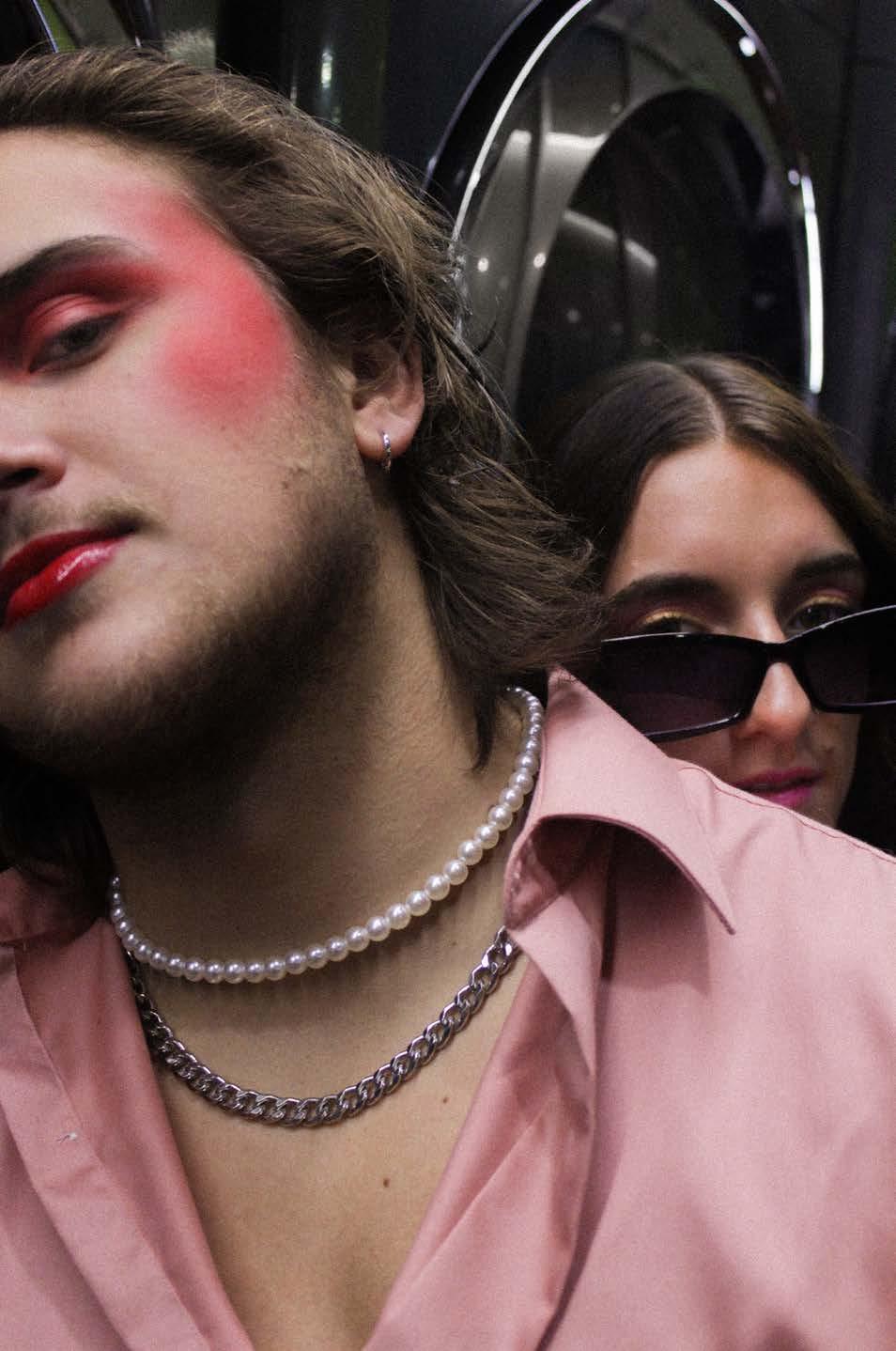
Stylist: Juliane Pautrot

19
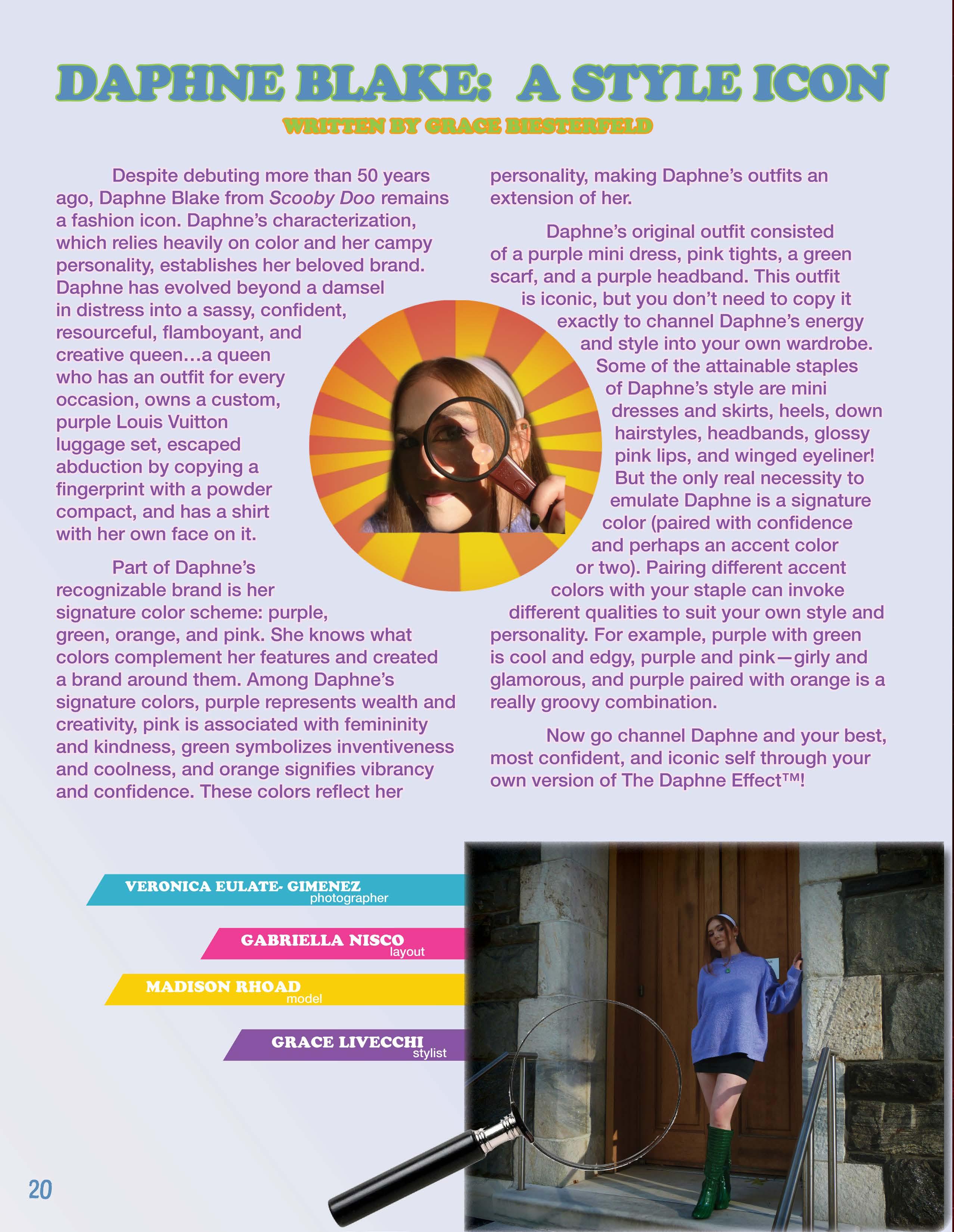
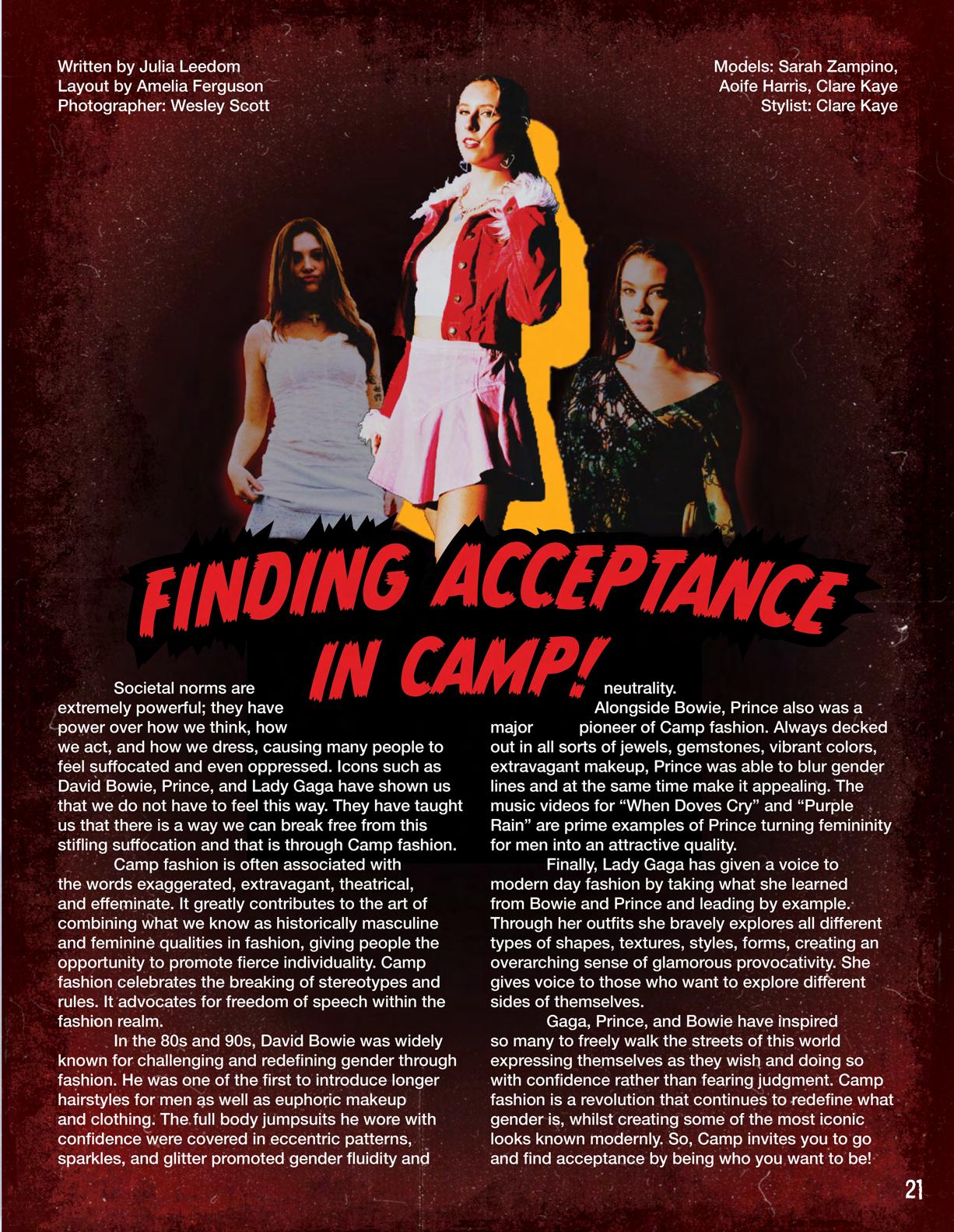
The 1983 erotic horror flm The Hunger stars Catherine Deneuve, David Bowie, and Susan Sarandon. The flm features a vampire couple and their love triangle with a gerontologist. What caught my eye most throughout the flm was the timeless, gothic fashion. The flm strays away from the traditional portrayal of vampires in flm (long cloaks and high collars) and moves into a more modern, sultry, and subtle portrayal of the immortal creature. The costumes were designed by Italian costume designers Milena Canonero. Catherine Deneuve’s character Miriam Blaylock’s costumes specifcally stood out to me. Deneuve’s costumes were styled by Yves Saint Laurent. Just like Miriam, these outfts are immortal. Miriam is commonly seen wearing black and always sports a red lip; there’s nothing more timeless than that! Miriam’s costumes include a low cut bodysuit, pantsuits, and jackets with padded shoulders. Her outfts were a perfect mixture of both masculinity and femininity that enhanced the flm’s sultry aesthetic. Her accessories, including slick silver cat eye sunglasses, were just as timeless. Miriam had amazing headpieces including a black hat with a fshnet studded in pearls that laid over her face.




Icon David Bowie played an aging vampire in the flm. His style within the flm was just as infuential as his style as a rockstar. Bowie was known for incorporating masculine and feminine styles and challenged fashion boundaries. His character was seen in black round sunglasses and tailored suits. Bowie’s role in The Hunger paved the way for androgynous gender expression in fashion. Gender fuidity has been very prevalent in fashion in the last few years as we move away from the social constructs that we have become accustomed to. This flm was so infuential in fashion that Alexander McQueen’s 1996 Spring fashion show “Hunger” was based on it. McQueen’s collection features shoulder-padded blazers and clean lines paired with punk rock, gothic hairstyles. The show’s main colors were black, white, and red; colors seen throughout the entire flm. This show is representative of the flm’s impact as a whole because it incorporates the androgynous gender expression from the flm. The Hunger inspired viewers to challenge the gender norms set by society through fashion.






23


80s Ja c e F h a y G e?
 Written by Riley Drumm
Written by Riley Drumm
These iconic outfts have been a marker of the 80s, especially in TV shows and movies. Examples of this fashion can be seen in the original 80s Slasher flm entitled Death Spa, as well as in modern interpretations on the 80s as seen in The Goldbergs and American Horror Story: 1984. Not only is there a resurgence in certain items from this era, but many popular clothing pieces have also taken direct inspiration from 80s workout gear. Yoga pants are a classic example, with the nylon stretchy fabric and tight, yet fattening silhouette. Workout wear has been incredibly trendy within the last few years, and the reason for that is it’s comfortability and functionality. Models, mothers, and young women are seen constantly sporting workout sets even when they’re not going to a workout. Part of this reemergence also helps capture that eclectic, funky look that many use as a source of inspiration. While there is pressure in the fashion industry to constantly be wearing something unique, I think 80s silhouettes and neon colors help to capture that. Slowly but surely, fashion trends from the 80s are working their way back into the mainstream and runway fashion scene. We’ve seen legwarmers being worn with boots in the fall, printed colorful tights, and metallic silver handbags in recent seasons. Since workout wear and 80s inspiration are both in full swing in the fashion world, what better time is there to reminisce on the classic 80s jazzercise mom!
Think Jane Fonda videos, women jazzercising on VHS, all in their uniforms of high-waisted and brightly colored everything. What made the 80s era of workout wear diferent from the eras before is how it is accessorized. The leotard and tights combination had been a staple of the 60s and 70s, but the legwarmers, sweatbands, and even the funky color block patterns are what make it stand out.
Layout by Julia Leedom Photographer: Manuela Juliao
Models: Andy Meeker & Nora Dettling Stylist: Alaina Stanisci
26


& the Rejection of Modernity
In 1988, Tim Burton gave life to one of his most wacky, vibrant, and endearing flms; the fantasy horror comedy, Beetlejuice, was one of the most forward-thinking visual stories of the time. This flm was not only famed for its storyline but also for the hair and makeup in it leading it to win an Academy Award for Best Makeup and Hairstyling.
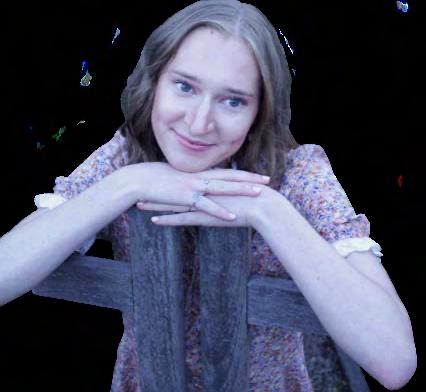


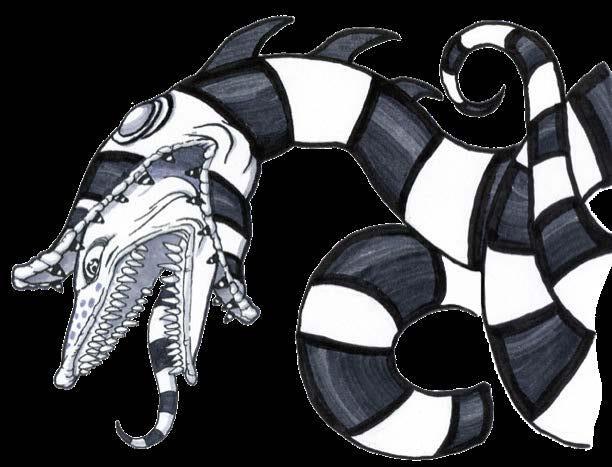
In classic Tim Burton fashion, the inspiration for the color palette came from Necco Wafers which were thin, pastel candies. From there, the colors became brighter and less gritty and creepy-looking as the makeup artists experimented and let their minds run free. This flm became one giant creative exercise. The entire flm was so unique, which is clearly seen in the work of artists Ve Neill, Steve LaPorte, and Robert Short. In the wake of what is known as 80s beauty, their execution ties in very nicely to the trends but also completely rejects them. When it comes to vibrant colors, the flm has it. However, they also managed to make vibrant colors look horrifc and dark. The main character, Beetlejuice, has pale yellow hair with green tips. But by adding big dark circles around his eyes, he began to look cartoony.
This flm shows that experimenting with makeup, hairstyles, and trying new things outside of your comfort zone, and societal norms can have wondrous outcomes. Makeup can be strange and unusual; it is meant to spark creativity and be over-thetop. Beetlejuice’s combination of light with dark made them a clear winner for the pure reason of having the ability to surprise the audience. This makeup stepped out of the modern and is a look that is absolutely necessary to revisit in years to come.
THE HORRIFIC TRUTH ABOUT CAMP
Writen by Mady Ford
Photographer: Justina Brandt
Makeup Artist: Amanda Buckley
Models: Natalia Cruz, Niamh Cogley, Daniela Grono
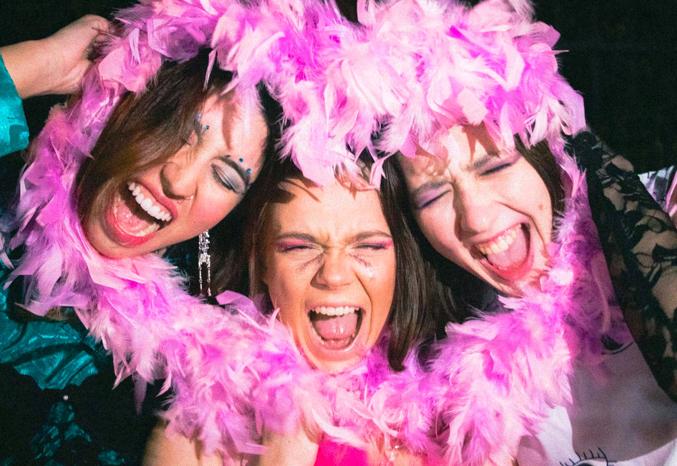
Layout by Rachel Erickson
Stylist: Jacquee Moran
As postmodernist art revisits the beauty sphere, the makeup industry encounters one of the most controversial yet riveting aesthetics: CAMP. In the past few years, mainstream media has encountered a resistance towards the reign of basics and instead promotes an opportunity to be tacky and bold while illustrating theatrical concepts and a newfound freedom of expression. From Kim Kardashian wearing Mugler to Cher wearing Oscar de la Renta, CAMP has found a home within fashion circles. Inherently, this creative and captivating style has bled into the flm and entertainment industry and, specifcally, horror. Some may consider CAMP to be a subgenre of horror due to its juxtaposition of comedic relief and dramatized features. Amid the thrills of horror, CAMP allows for mystery and inevitably adds to the story.

Ezra Miller at the MET Gala in 2019 perfectly encapsulates why CAMP is simply a mockery of all things serious yet, is serious nonetheless. Why would someone go to the MET with a bejeweled corset paired with an elongated cape and fve eyeballs across the face? Because it’s CAMP. Miller’s look sent eerie chills down my spine and remained fabulous. Or perhaps Jared Leto carrying a replica of his head on his hip sent the right message: CAMP is so atrocious, it is good. We are to dethrone what is predicted and expected; this concept is widely accepted in the horror genre. Horror presents an unprecedented, spectacular version of universal fear with the intent to grab the audience’s attention in unique ways.
Ultimately, CAMP and horror work together to repress contemporary ideas and instead, create original and unrealistic imitations of the real world. Without CAMP, horror would be predictable, boring, and repetitive. CAMP is entertaining and pursues our imaginations, within horror and everything else. From the MET red carpet, to TikTok trends, to the best ranked horror flms, CAMP maintains the dichotomy between sophistication and vulgarity and refutes naturalism.
30
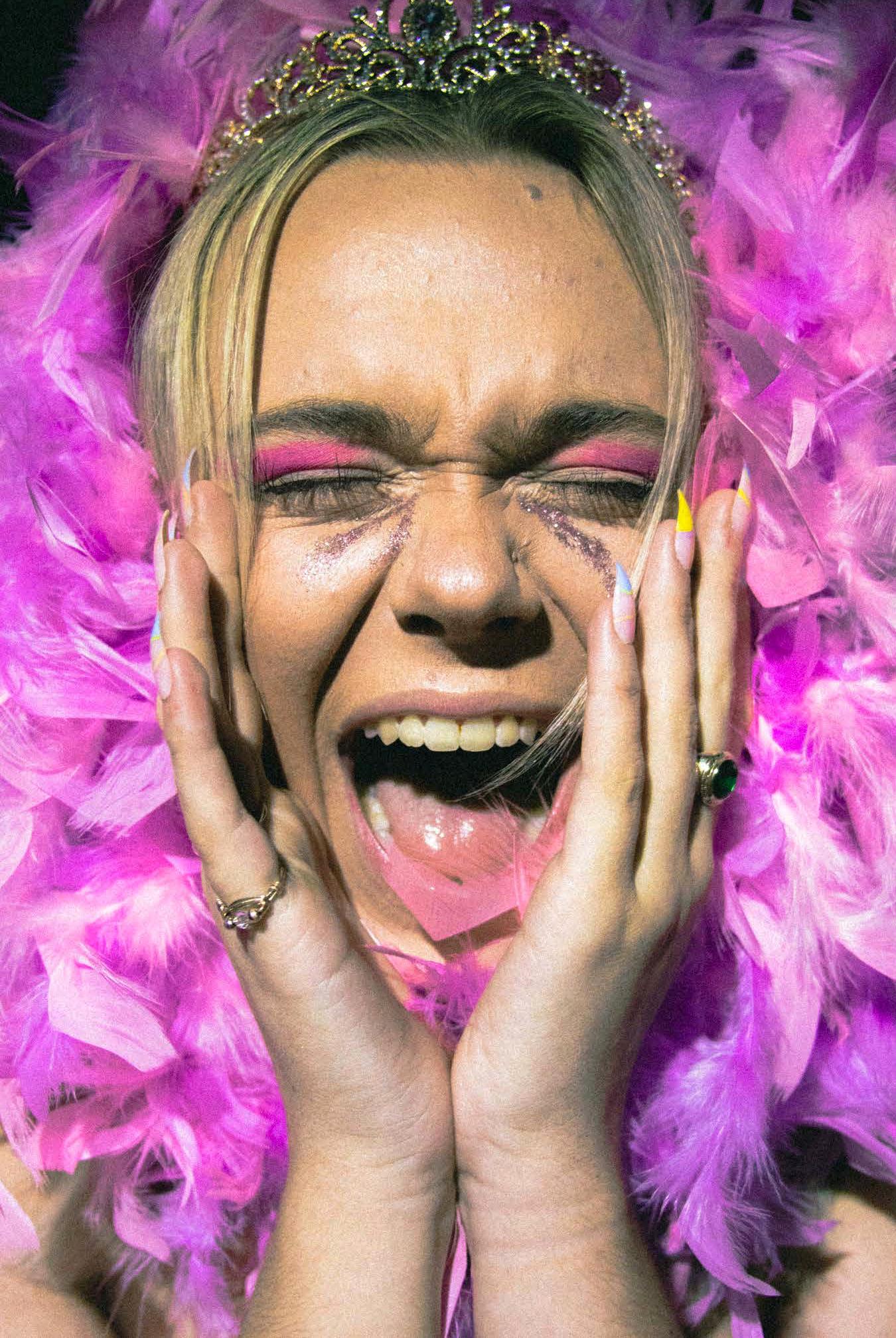
























 Written by Lauren Lombardi
Written by Lauren Lombardi































 Written by Riley Drumm
Written by Riley Drumm





























